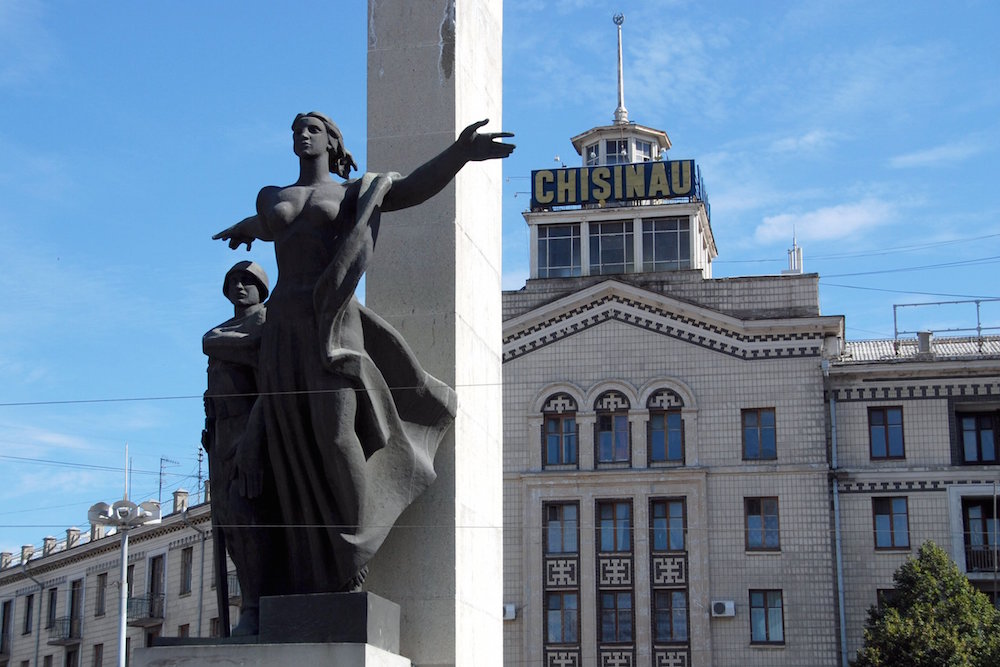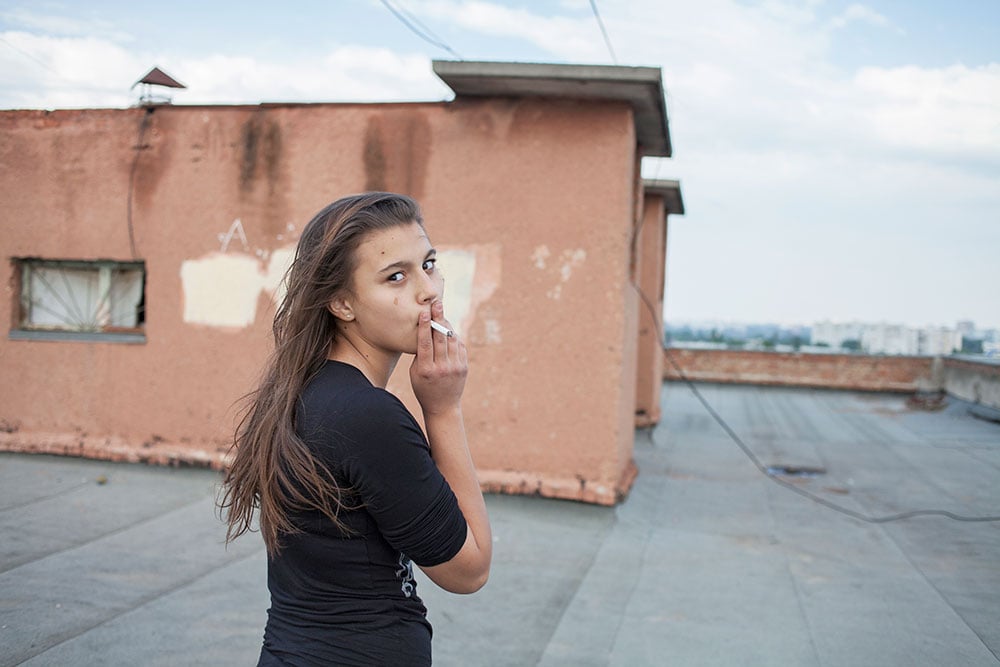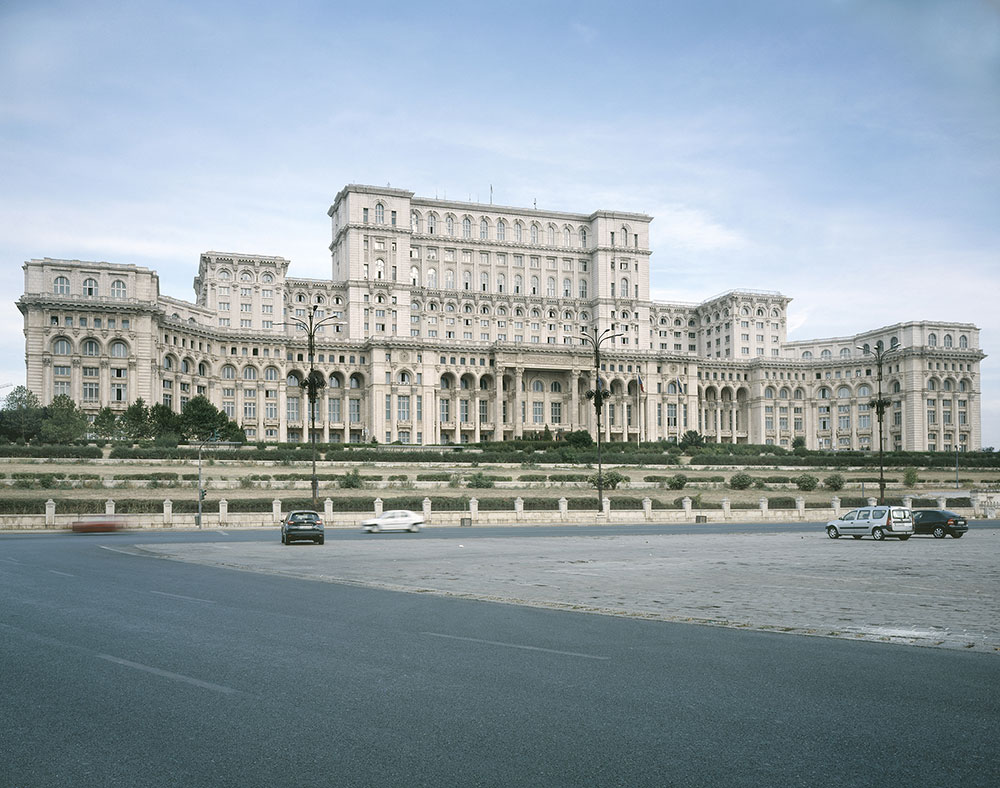Letter from Bălți: is Moldova’s forgotten second city poised for a comeback?

Once a thriving centre of industry, Bălți has suffered decades of decline since the collapse of the USSR. But with tax exemptions now attracting business and EU accession on the horizon, could the tide be turning for the Moldovan city?
Unsurprisingly for a city whose name literally translates as “swamp”, Bălți rarely makes it on to tourist itineraries. As Moldova’s second largest city, it’s hardly “off the beaten track”, although the turbulent marshrutka ride there nearly proved otherwise. Tumbling through the Moldovan hills, I feared for those straddling the makeshift stools flung into the aisle by the driver. The route snaked along vast stretches of golden sunflower fields, past endless rows of luscious vineyards. People were picked up and dropped off in the middle of nowhere, in places marked by little other than lonely graves in empty cornfields. After around two hours from where I boarded at Chișinău, people began to disembark. Beltsey? I said to the driver, attempting to recall its deceptive pronunciation. A swift nod and I found myself in a dusty car park, huge Brezhnevka-style flats towering above.
The transition from rural to urban was abrupt. Even the tower blocks looked like they didn’t expect to find themselves there. They stood erect, concrete and geometric, amid rolling farmland. I followed the tram wires that trailed alongside the prefabricated flats, their facades a patchwork of faded pastel. Around the corner, in a nearby estate, cats perched on silver skips, lazing in front of flats embossed with Moldovan folk patterns. Above them, ornate net curtains hung in hexagonal corner turrets, a glimpse into the city’s distinctive mix of folk and Soviet culture.
The ethnic makeup of the city is diverse, with the region previously falling under the control of the Ottoman Empire, Romania, Russia and the USSR. Historically, the city had a majority Russian-speaking population, with most citizens opposing the drive to establish Romanian as the official language of the country after the fall of the Soviet Union. However, following the economic turmoil that ensued in the early years of independence, many of the Russian-speaking residents left to pursue job opportunities abroad. Currently, around half of Bălți’s population are Moldovan, the other half Ukrainian and Russian.
Giant socialist realist mosaics continue to adorn the sides of flats
Many relics from the USSR remain, implying that Bălți is not particularly ashamed of its distinctively Soviet past, nor keen to instigate any kind of “decommunisation” process. Giant socialist realist mosaics continue to adorn the sides of flats throughout the city. One depicts a woman dressed in folk costume, humbly cupping her hands and sipping water from a well. Just around the corner stands a more abstract piece, a colossal hand holding a building block above a city skyline – an ode to communist town planning. In the estate’s playground, old Soviet climbing frames stood twisted, draped in traditional woven carpets and bed sheets that had been left out to dry, the past a rusted frame supporting the multifarious reality of Bălți’s present.
The main square is broad and clean and lays itself bare to the midday sun. Off-centre stands a concrete circle painted with the colours of the Moldovan flag. Tucked at the side lies a small park with an archway shrouding tables selling trinkets. Nearby, gypsies gather, hanging their clothes on trees. Statues of three classical Romanian writers — Mihai Eminescu, Ion Creangă and Grigore Vieru — stand in the park. Above them peer the silhouettes of Lenin, Marx and Engels from the front of the district registration office. I was actually surprised to find them there. Upon researching the city, a catalogue published by The Regional Development Agency appeared to show them removed, likely a hackneyed Photoshop job by Chisnau’s pro-EU government, in an attempt to incentivise foreign investment.
Once a main industrial hub, the city has long suffered economic decline. During Soviet times, Bălți specialised in producing industrial machinery and agricultural processing and was home to a mammoth 8,000-worker factory called Lenin. However, following independence, the transition to a market economy left most of the population under the poverty line. Bălți’s industrial sector was particularly hard hit and saw unemployment spike to an all-time high. The population dropped by 25%, with many leaving to seek opportunities in Ukraine and Russia.
Business in the region is now starting to pick up again. In 2010, in a bid to attract foreign investors, Bălți was made a “free economic zone”, in which companies can be exempt from tax for up to five years, and benefit from zero VAT on imports. Since then, businesses such as German automotive components manufacturer Dräxlmaier have set up factories there. The company operates two auto cable system plants and recently announced plans to invest 31 million euros ($34 million) in building another site. Walking past the well-kept flowerbeds and glistening chainmail facades on the way to the central mall, it seemed that perhaps evidence of this new wealth was emerging in the city’s landscape. However, when I entered the mall, I found that the shops were empty, filled only with bored-looking cashiers doing laps on flawlessly polished floors. No one appeared to be buying anything. The place was a ghost town.
Now, the country’s top trading partner is Romania
It wasn’t until I ventured along a side road to the market, that I discovered where everyone was. The market was huge and sprawling. Inside, women in blue gloves and white caps cut large slabs of Brinza cheese, while pigs’ heads hung on hooks guarding the meat counters. Crowds of people streamed past flimsy shelves that bowed perilously in the middle, ready to collapse under the weight of jarred preserves. Ripe watermelons spilled into the aisles and mounds of oranges were piled up so high you could barely see the tips of the heads of those manning the stall. Produce was plentiful; perhaps the result of Moscow-imposed sanctions on exports after Moldova signed an EU trade agreement in 2014. Now, the country’s top trading partner is Romania. The EU member state has cosied up to Moldova, lending 150 million euros ($164 million) to help bolster its infrastructure, and even going as far as building a gas pipeline in order to encourage smoother integration with the EU and less reliance on Moscow.
On the facades of old factory buildings and inside the city’s central post office, hammer and sickles remain intact, despite the country’s ban on communist symbols. Perhaps the continued presence of such insignia is testament to Bălți’s allegiance to Moscow. After all, in the lead-up to the fall of the Iron Curtain, Bălți was known as the “quiet” city, with few independence demonstrations taking place. The city has since maintained a succession of communist and pro-Russian leaders. Bălți’s current mayor, Renato Usatîi, is the leader of the Moldova’s Eurosceptic “Our Party”. A controversial character, Usatîi was jailed last year for tapping the phone of former Prime Minister Vlad Filat. His previous party Patria (Homeland) was banned in the last election, after allegedly accepting illegal funds from Russia amounting to $450,000.
Back in the main square, music blared from speakers in front of the national theatre. A group of youths dressed in folk costumes, a couple of years shy of becoming teenagers, were preparing to perform a traditional dance. Girls congregated in white embroidered dresses taking selfies while boys chased each other down concrete ramps. With elections coming up on 30 October, I wonder what the future holds for them. The outcome could determine the country’s EU accession or possibly result in increased Russian control over internal affairs. One boy took a brave leap from a wall several feet high, before proudly finishing in a heel-click jump. His feet not encased in Romanian moccasins, but in leather Russian boots. I wonder if these boots will still be doing the same hop-skip-and-jump on the city’s pavements in 20 years’ time.


















